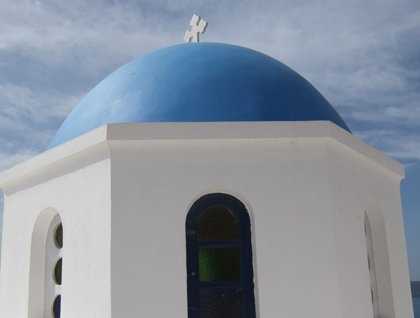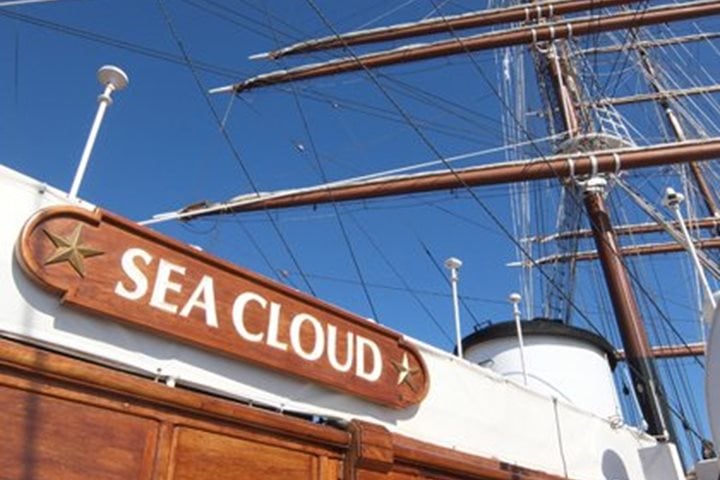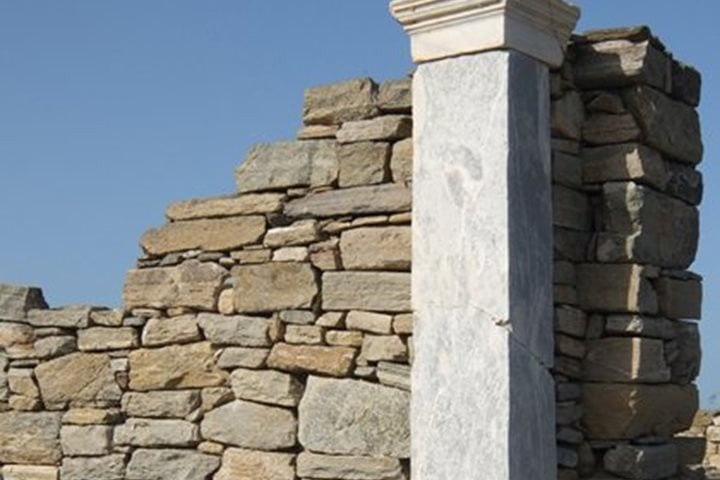Still recovering from the 120-kg yellowfin tuna that comprised the main course of last night’s meal, most of us managed an early-morning wakeup to view the spectacular sight of Sea Cloud entering the caldera of Santorini shortly after sunrise. We spent the morning exploring the picturesque, cliff-top town of Oia, photographing the island’s famed architecture, and browsing the local arts and crafts on offer.
After a lunch of mezedes and local wine in the village of Pyrgos, we departed for the archaeological site of Akrotiri. Although only a small fraction of the original settlement has been excavated, finds at this site have revealed an initial settlement dating to the Neolithic period and, later, in the Middle Cycladic period, a thriving Minoan trading colony. Wealthy merchants in this 17th century B.C. city occupied two and three-story houses with interior plumbing and large windows. The interior walls were originally decorated with lively, colorful frescoes: women gathering saffron, playful monkeys, and a ceremonial procession of ships. The delicate frescoes have been removed from the site in order to preserve them, and some of these exquisite works may be viewed at the Archaeological Museum in Athens.
Our return to the ship via tender late in the afternoon was followed immediately by the chance to swim in the caldera of Santorini. A significant number of passengers as well as crew took advantage of this rare opportunity, enjoying the bracing temperature of the salty Aegean.









